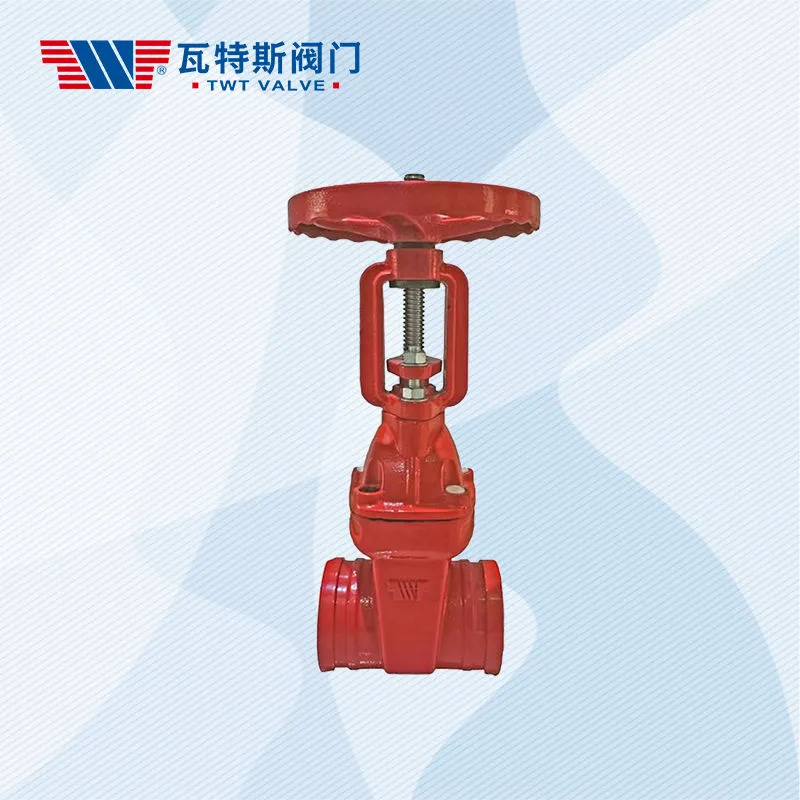Posted on August 23, 2023
What are some common materials used for the gate and body of resilient seated gate valves?
The gate and body of resilient seated gate valves are typically constructed using different materials, each chosen based on the specific application requirements.
Here are some common materials used for the gate and body of resilient seated gate valves:
Ductile Iron: Ductile iron is a widely used material for both the gate and body of resilient seated gate valves. It offers excellent strength, durability, and corrosion resistance. Ductile iron is suitable for a variety of applications, including water supply systems, wastewater treatment plants, and industrial processes.
Cast Iron: Cast iron is another common material for the gate and body of resilient seated gate valves. It provides good strength and corrosion resistance, making it suitable for general-purpose applications. Cast iron valves are often used in water and wastewater systems.
Stainless Steel: Stainless steel is chosen for its superior corrosion resistance properties. It is commonly used for the gate and body of resilient seated gate valves in applications involving corrosive fluids or environments. Stainless steel valves are often specified for chemical processing, marine, and offshore applications.
Bronze: Bronze is a material known for its excellent corrosion resistance and low friction properties. Resilient seated gate valves with bronze gates and bodies are commonly used in water supply systems, irrigation, and HVAC applications.
Carbon Steel: Carbon steel is a strong and durable material that is often used in industrial applications, including oil and gas, petrochemical, and power generation industries. Resilient seated gate valves with carbon steel gates and bodies are suitable for applications involving higher pressures and temperatures.
PVC (Polyvinyl Chloride): PVC is a lightweight and cost-effective material that offers excellent corrosion resistance to a wide range of fluids. Resilient seated gate valves with PVC gates and bodies are commonly used in water and wastewater systems, irrigation, and chemical applications.
Other Materials: Depending on the specific application requirements, other materials such as alloy steels, nickel alloys, or exotic materials may be used for the gate and body of resilient seated gate valves. These materials are chosen for their enhanced corrosion resistance, temperature resistance, or compatibility with specific fluids.
The selection of materials for the gate and body of resilient seated gate valves should consider factors such as the nature of the fluid being handled, the operating conditions (including pressure and temperature),resilient seated gate valve and any specific requirements for corrosion resistance or mechanical properties. It is recommended to consult with valve manufacturers or specialists to determine the most appropriate material selection for a particular application.
What are the advantages of using ductile iron for the gate and body of resilient seated gate valves?
Using ductile iron for the gate and body of resilient seated gate valves offers several advantages. Here are some key advantages:
Strength and Durability: Ductile iron is known for its high strength and durability. It is significantly stronger than cast iron, making it suitable for applications that require robust and long-lasting valves. Ductile iron gate and body can withstand high pressures and provide reliable performance over an extended service life.
Corrosion Resistance: Ductile iron exhibits good corrosion resistance, especially when compared to cast iron. It can withstand exposure to various corrosive environments, including water, sewage, and industrial fluids. This corrosion resistance makes ductile iron suitable for use in water supply systems, wastewater treatment plants, and other applications where corrosion may be a concern.
Cost-Effectiveness: Ductile iron is generally more cost-effective than materials like stainless steel or bronze. It offers a good balance between performance, durability, and cost, making it a cost-efficient choice for many applications. This affordability is especially advantageous for projects with budget constraints.
Machinability: Ductile iron is relatively easy to machine, allowing for precise manufacturing and customization of valves. It can be readily shaped and formed into complex geometries, facilitating the production of gate valves with accurate dimensions and smooth surfaces.
Impact Resistance: Ductile iron has excellent impact resistance, which makes it less susceptible to cracking or damage caused by external forces or sudden pressure changes. It can withstand mechanical stresses and shocks, making it suitable for applications where the valve may be subjected to high-pressure surges or frequent opening and closing.
Noise and Vibration Reduction: Ductile iron gate valves have inherent properties that help dampen noise and vibrations during operation. The material’s inherent damping capacity minimizes the transmission of noise and vibrations through the valve, contributing to a quieter and smoother operation.
Ease of Installation and Maintenance: Ductile iron gate valves are relatively easy to install and maintain. They are lighter in weight compared to materials like stainless steel, making handling and installation more convenient. Ductile iron also requires minimal maintenance, reducing downtime and associated costs.
It is worth noting that the suitability of ductile iron for the gate and body of resilient seated gate valves depends on the specific application requirements, including the fluid characteristics, operating conditions, and industry standards. Consulting with valve manufacturers or specialists can provide further guidance on material selection based on the application’s specific needs and considerations.


